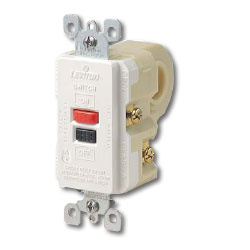kwired
Electron manager
- Location
- NE Nebraska
- Occupation
- EC
Pardon if this was mentioned already. Take a look at 210.8(F). This would require the typical condensing unit in a dwelling to have GFCI.
First I ever heard of it, but reading what it says, yes. It doesn't mention receptacles, which might make more sense, it just says "outlets" along with outdoors, 150 volts to ground or less and 50 amps or less. Pretty much covers everything you might commonly find outdoors at a dwelling other than some 5 ton heat pumps/AC's might call for a 60 amp breaker.
This is stupid for anything hard wired IMO, if there is a receptacle involved I still don't know that darn near everything should be included, but makes a little more sense than hard wired items.






